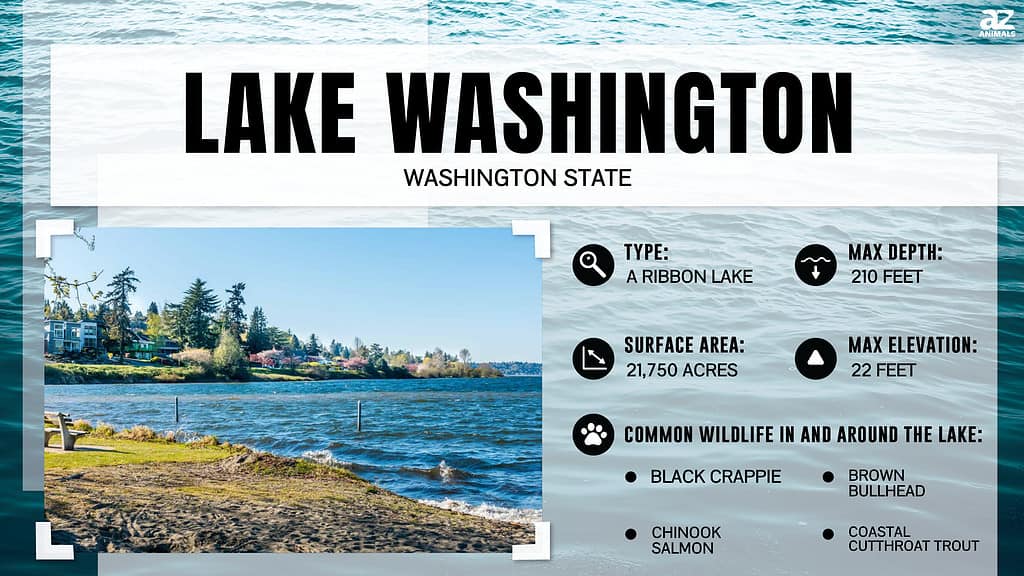
Biodiversity and the environment worldwide face a colossal peril from pollution, which may appear in various guises. It could be as plain as agricultural runoff or as dangerous as radioactive waste. Bodies of water like rivers or lakes are typically the hardest hit.
As these are essential resources for communities that depend on them for sustenance and leisure, pollution can have widespread consequences.
In this article, we’ll look at the most contaminated lake in Washington State and the species that inhabit it.
The Most Polluted Lake In Washington State
Lake Washington is the second biggest natural lake in the state of Washington. The Cedar and Sammamish Rivers are the two significant streams flowing into Lake Washington. The Cedar River, located at the lake’s southern end, contributes roughly 25% of the phosphorus load yearly and 57% of the hydraulic load.
The Sammamish River provides 41% of the phosphorus load and 27% of the hydraulic load from the north. Around 63% of the immediate watershed is urban and developed. The upper part of the watershed comprises the Cedar River headwaters, located in the closed Seattle Water Department watershed.
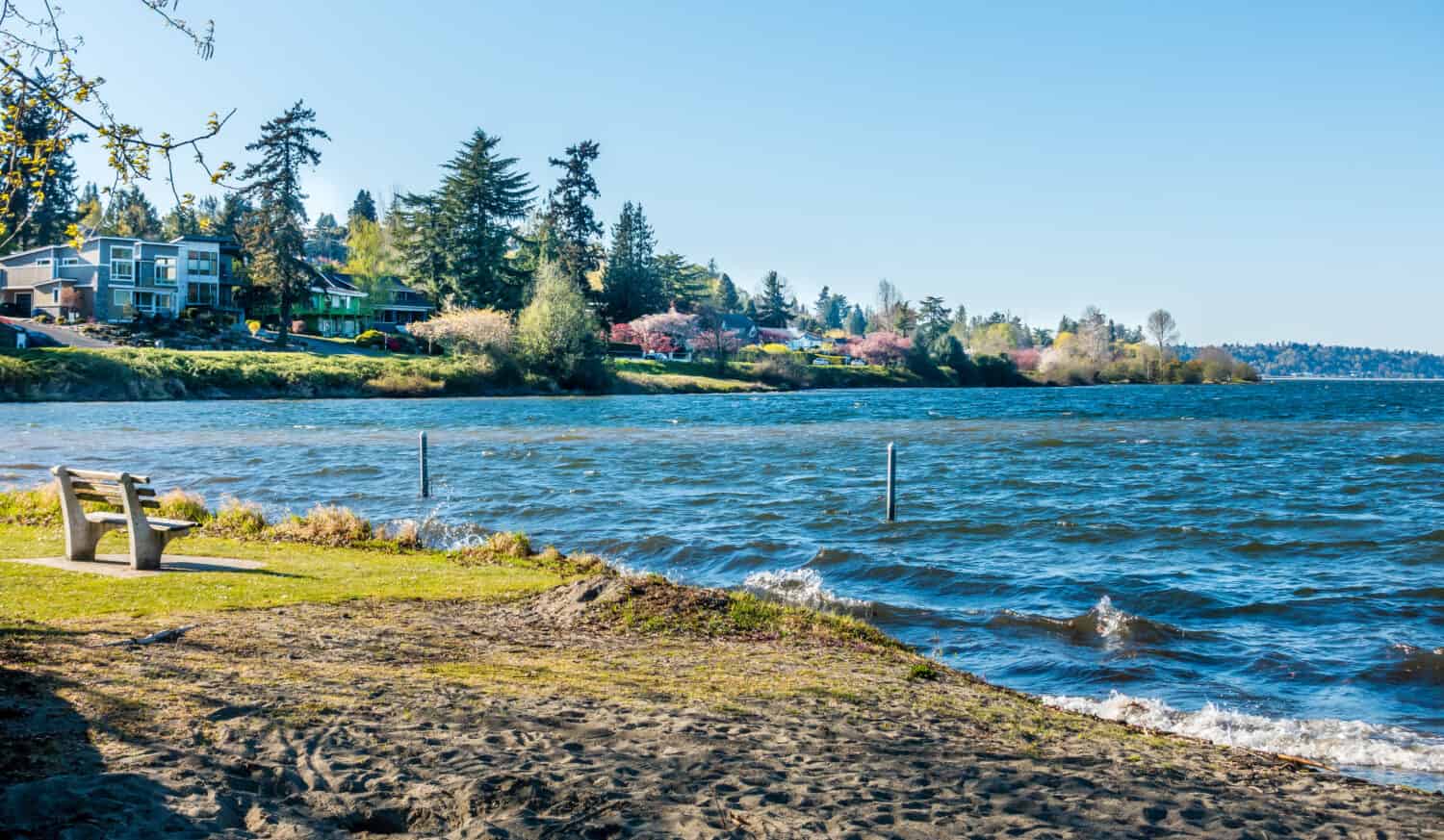
Lake Washington is the second biggest natural lake in the state of Washington.
©GeorgeColePhoto/Shutterstock.com
Background Information on Lake Washington
Lake Washington’s basin is a glacial trough that’s deep, narrow, and has steep sides. It was shaped by the Vashon ice sheet, the last glacier to pass through Seattle. The lake connects to Puget Sound through Lake Union and the Lake Washington Ship Canal, constructed in 1916.
Before the canal, the Sammamish River was the primary source of water. After the canal’s establishment, the lake dropped by 9 feet; this caused the Black River to dry and the Cedar River to flow into Lake Washington. Mercer Island sits in the south end of the lake, separated from the east side by a shallow channel and the west side by a deep channel. Compared to Lake Sammamish, Lake Washington is much deeper and larger.
How Human and Biological Factors Led to the Pollution of Lake Washington
Lake Washington shows how both human and biological influences can change water quality. From 1941 until 1963, sewage polluted the lake, causing it to deteriorate and become nutrient-rich. As a result, blue-green bacteria dominated the water between 1955 and 1973.
Dr W.T. Edmondson, a zoology professor at the University of Washington, extensively researched the lake.
In 1955, oceanographer George Anderson found Oscillatoria rubescens, a type of cyanobacteria, in the lake, prompting further studies. The researchers predicted the lake would soon face the same algal conditions as Lake Zurich in Switzerland.
Detecting water quality problems is not always straightforward. Algae can be easily spotted and smelled, but other factors require lab testing. Dr Edmondson discovered that sewage-derived phosphorus was promoting algae growth in Lake Washington.
Phosphorus concentrations in the 1960s were as high as 70 parts per billion, which led to rampant algae growth, discolored water, and rotting algae on shorelines. These revelations triggered intense political debates and had important implications for various industries.
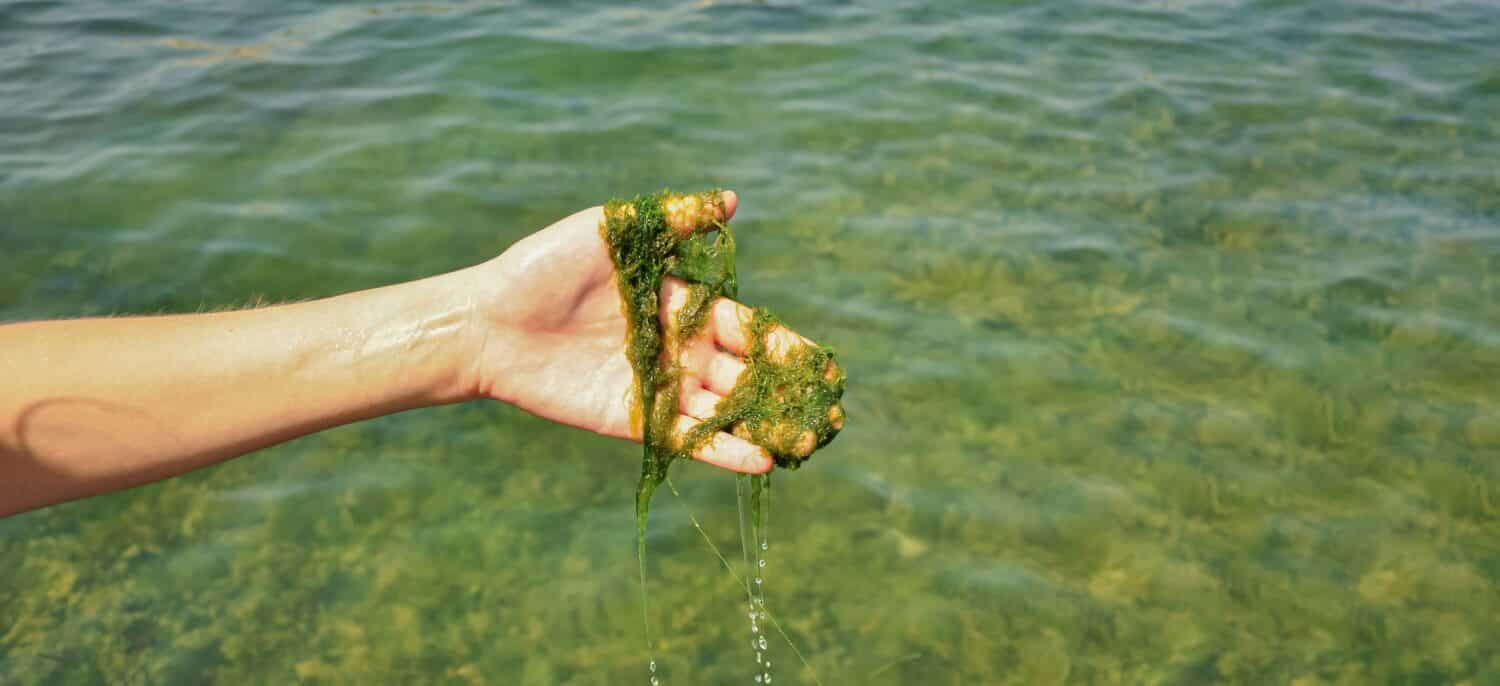
Algae can be easily spotted and smelled, but other factors require lab testing.
©Elif Bayraktar/Shutterstock.com
Lake Washington’s Successful Restoration
Lake Washington is the best example of a lake revived by redirecting sewage. Metro Council was established in 1958 to achieve this. Between 1963 and 1968, over 100 miles of sewer lines were built to transport sewage to West Point and Renton treatment plants.
The cleanup was costly, taking $140 million from the budget. From 1963 to 1967, sewage was cut off from the lake, and by 1968, all wastewater was treated except for combined sewer overflows (CSOs). Following that, the water quality grew better, as anticipated. Blue-green algae dwindled, and they have remained negligible since 1976.
Dr. Edmondson’s prediction was right; constructing these large facilities produced amazing results. Previously, Lake Washington received 20 million gallons of waste daily, but by February 1968, the flow had stopped completely. When the last shoreline treatment plant closed, phosphorus levels decreased to around 16 parts per billion and remained stable for decades.
The lake’s visibility, which was as low as 30 inches in 1964, improved to 10 feet in 1968, and water quality improved. As time passed, the lake’s clarity increased to depths of 17 to 20 feet, reaching its highest point of nearly 25 feet in 1993.
Where is Lake Washington Located on a Map?
Lake Washington, situated near the city of Seattle, Washington, United States, is a vast body of freshwater. It holds the distinction of being the biggest lake in King County and the second-largest naturally occurring lake in the state of Washington, following Lake Chelan.
Here is Lake Washington on a map:
The Role of Algae and Zooplankton in Improving Lake Washington’s Transparency
The level of transparency improved after 1976, but it wasn’t due to the measured phosphorus amount. The improvements occurred because of alterations in the algae, zooplankton, and fish populations.
The Negative Effects of Oscillatoria Rubescens
In the 1960s, Lake Washington had a serious eutrophication problem, leading to the growth of Oscillatoria rubescens, a type of cyanobacteria. These organisms formed dense masses near the water surface and were not good food for grazing zooplankton. Oscillatoria also negatively affected other algae by shading them and releasing biochemicals.

The cyanobacteria in Lake Washington came about as a result of a serious eutrophication problem.
©Aleksandrkozak/Shutterstock.com
The high levels of phosphorus in the lake water allowed Oscillatoria to flourish. However, less phosphorus was available when sewage was diverted, making conditions unfavorable. As a result, the cyanobacteria disappeared entirely in 1976.
The Role of Daphnia in Improving Water Clarity
The water flea, also called Daphnia, is a small crustacean that lives in water and measures about 2 mm in length. It became a crucial member of the zooplankton in Lake Washington in 1976, despite being present in small amounts before. Daphnia is skilled at filtering water and can reduce the algae in it, making it clearer.
Although Daphnia can eat some forms of filamentous plankton, it cannot consume Oscillatoria. The upsurge of Daphnia matched the downfall of Oscillatoria in the lake. Daphnia can breed fast in favorable environments. Its population can swing throughout the year but usually peaks in May and June when the weather is warm and bright.
The Decline of Possum Shrimp and Increase of Long-Fin Smelt
In addition to the decrease in Oscillatoria and the increase in Daphnia, there was also a reduction in the population of possum shrimp.
The possum shrimp (Neomysis mercedis) is a tiny crustacean. It can grow up to 14mm and likes to eat Daphnia a lot—and is its main predator. Neomysis is native to Lake Washington and has been there for ages, but since 1968, it’s been scarce. As the possum shrimp population declined, there was an uptick in the number of long-fin smelt, which Robert Dryfoos, a UW student, discovered in the 1960s.
The reasons behind the surge in longfin smelt numbers are unclear. Still, they might be associated with accidental enhancements to the Cedar River’s breeding habitats, where most spawning occurs. Authorities have been trying to conserve the salmon habitat and mitigate flood harm in the region. It’s conceivable that these actions have unintentionally assisted the longfin smelt population.
Fishing In Lake Washington: The Best Species To Target
Cutthroat Trout
Lake Washington doesn’t have any artificially-bred trout, but it’s teeming with coastal cutthroat trout native to the area. These fish also migrate in and out of the Cedar River, a well-known fly fishing destination. People eat wild trout rather than hatchery fish since they’re produced in natural environments, eat natural food, and swim freely. They’re also tougher to catch as game fish.
Lake Washington offers year-round cutthroat trout fishing, but spring and fall are the most promising times for catching these fish. The early spring to June and October to December are usually the best times to catch trout. Cutthroat trout prefer cooler temperatures for their activity levels to rise. They tend to feed in the shallower parts of the lake during spring and fall. However, they become less active during the summer and winter and stick to the deeper regions.

Although Lake Washington offers year-round fishing, spring and fall are the most promising times for catching cutthroat trout.
©CSNafzger/Shutterstock.com
Largemouth Bass
Largemouth and smallmouth bass inhabit Lake Washington throughout the year, with the fishing season peaking between April and September or October. May and June are optimal for catching these fish in Lake Washington.
Largemouth bass have large mouths that distinguish them from other fish and are indiscriminate eaters, consuming anything that can fit in their jaws, including birds and rodents. Smallmouth bass, typically smaller than largemouth, prefer relatively smaller prey, such as insects and crayfish.
In summer, bass split their day into active and inactive intervals. They seek refuge in shadowy hideouts or deeper water to avoid the scorching sun. Anglers can locate bass easily during the early morning or late evening hours when they swim in shallow waters to hunt. Should you notice minnows darting away suddenly, a sizable bass is probably on the prowl for prey.

As their name suggests, largemouth bass have large mouths that distinguish them from other fish and are indiscriminate eaters.
©FedBul/Shutterstock.com
Salmon
Lake Washington is home to two distinct salmon varieties that anglers can catch. The coho salmon migrates into the lake from Puget Sound through Ballard Locks and can grow considerably. The kokanee is similar in size to a trout and never leaves the freshwater.
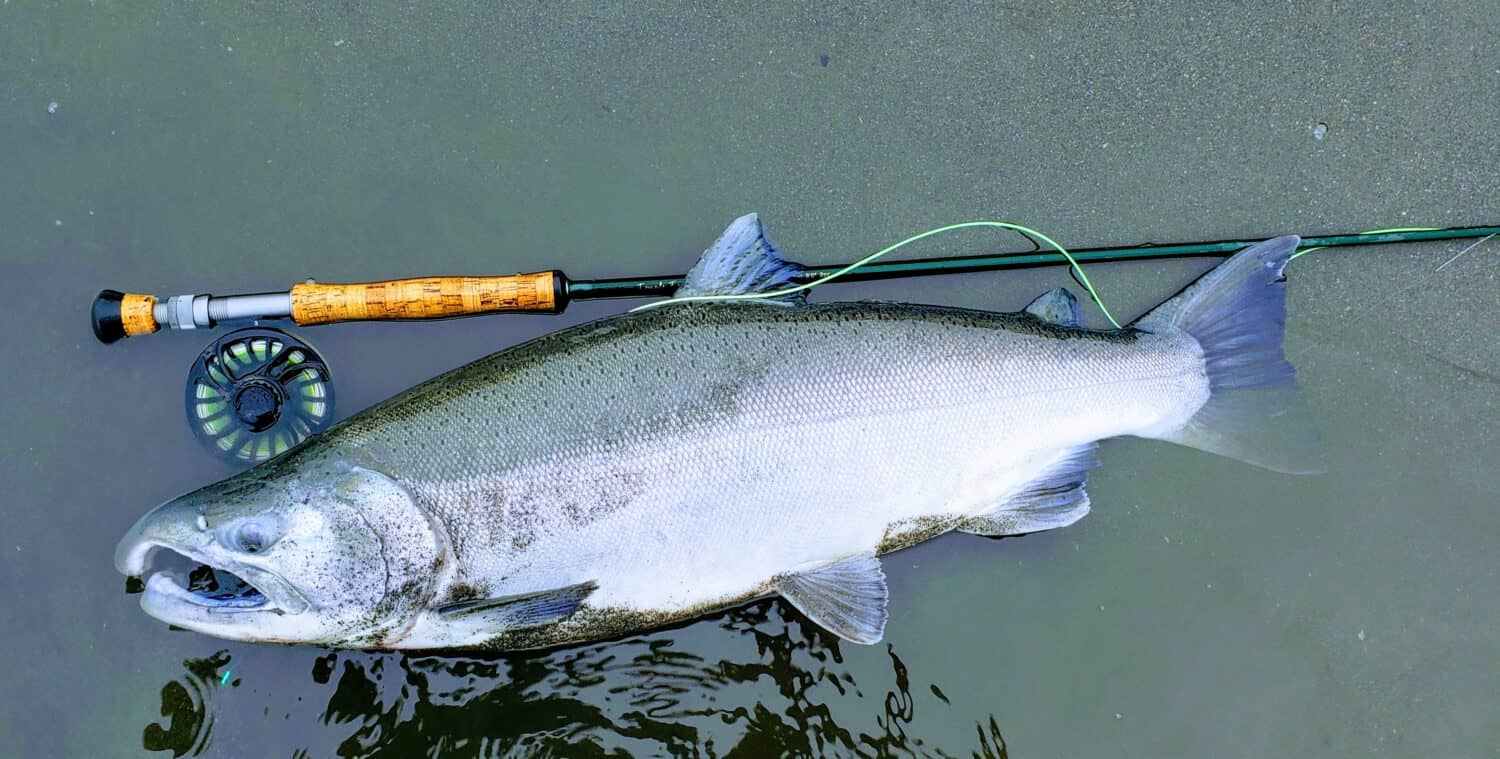
Coho salmon migrate into the lake from Puget Sound through Ballard Locks and can grow considerably.
©mark__graham/Shutterstock.com
Coho
Fishing for coho is only permitted from September 16 to October 31, with a daily limit of four fish, subject to change. Coho in the lake can grow over 30 inches long, but catching coho under 12 inches is prohibited, as they haven’t matured in the ocean yet. The fishing limit for coho is only enforced in areas north of the Highway 520 bridge, including the Sammamish River’s lower part.
Coho fishing contrasts with trout fishing, despite their similarity. Coho are more massive and robust, and they may exhibit aggressiveness. Certain anglers propose that inciting them is the optimal strategy to hook them. Using lures such as spinners or jigs can elicit a coho attack, but their biting tendencies may be unpredictable in freshwater.
For salmon angling, one must equip themselves with more robust gear, such as a sturdy rod and heavier line. If you plan on releasing your catch, it is advisable to use rubber nets; some of them are tailored exclusively for catching coho.
Kokanee
Lake Washington has kokanee, but they aren’t deliberately put there. Kokanee are a type of salmon that doesn’t migrate to the ocean. The ideal time to catch kokanee is in late spring when they gorge on plankton. During the summer, they move into deep water, making them harder to catch. Fishing for kokanee can also be good in the fall, but the bigger ones start to get ready for spawning and may not be as tasty.
You can’t keep kokanee salmon shorter than 8 inches or longer than 18 inches on Lake Washington. These fish put up a fight, and their soft mouths make them challenging to catch. Like coho, kokanee are responsive to bright and flashy movements in the water. A popular fishing technique is trolling lures and bait behind blades to get their attention. To ensure compliance with local advisories and regulations, verifying with the Washington Department of Fish and Wildlife is crucial.

Kokanee salmon put up a fight, and their soft mouths make them challenging to catch.
©Evan Benko/Shutterstock.com
Perch and Crappie
Yellow perch and black crappie are well-liked panfish; they’re usually less than 10 inches long and can be caught in good numbers all year round. They tend to stick together, and there are no restrictions on how many you can catch in a day. Crappies gather together in the springtime when they migrate to shallow water for spawning. They may not form as large groups. Meanwhile, perch move and feed in groups, and sometimes there are more than 100 fish in a school.
Perch and crappie prefer deep waters during both hot summers and cold seasons. For perch, fish from the bottom using small bait like worms or adjust the depth of your bobber. To attract crappie, use a jig and small bait, as they tend to bite lures due to their preference for small fish.
Perch thrive in Lake Washington from July to September but are still catchable in winter’s cold water.
Crappies hit their peak in late spring/early summer but can still be caught in the fall and throughout the year. Mercury is a concerning matter in Lake Washington, leading to the recommendation of limited perch consumption from the lake. Specifically, they suggest consuming only 8 ounces or one meal per month.

Black crappie are well-liked panfish; they’re usually less than 10 inches long and can be caught in good numbers all year round.
©Wirestock Creators/Shutterstock.com
Rock Bass And Northern Pikeminnow
Lake Washington also has unpopular sport fish like rock bass and northern pikeminnow. The northern pikeminnows or dace fish are notorious for devouring native trout and salmon and are considered invasive. Anglers can catch as many pikeminnows as they want since there are no restrictions.
Dace fish can be small or large, some reaching up to 2 feet long and weighing as much as 4 pounds. Consuming northern pikeminnow from Lake Washington is not recommended despite being readily available, as they have PCB contamination.
Rock basses are not the same as largemouth or smallmouth, but they’re still pretty abundant. If you want to catch them, the best time is June to September. These panfish are weird-looking; they have a bluegill-like back end and a bass-like front end. Even though they look big, they’re small and usually weigh less than a pound.
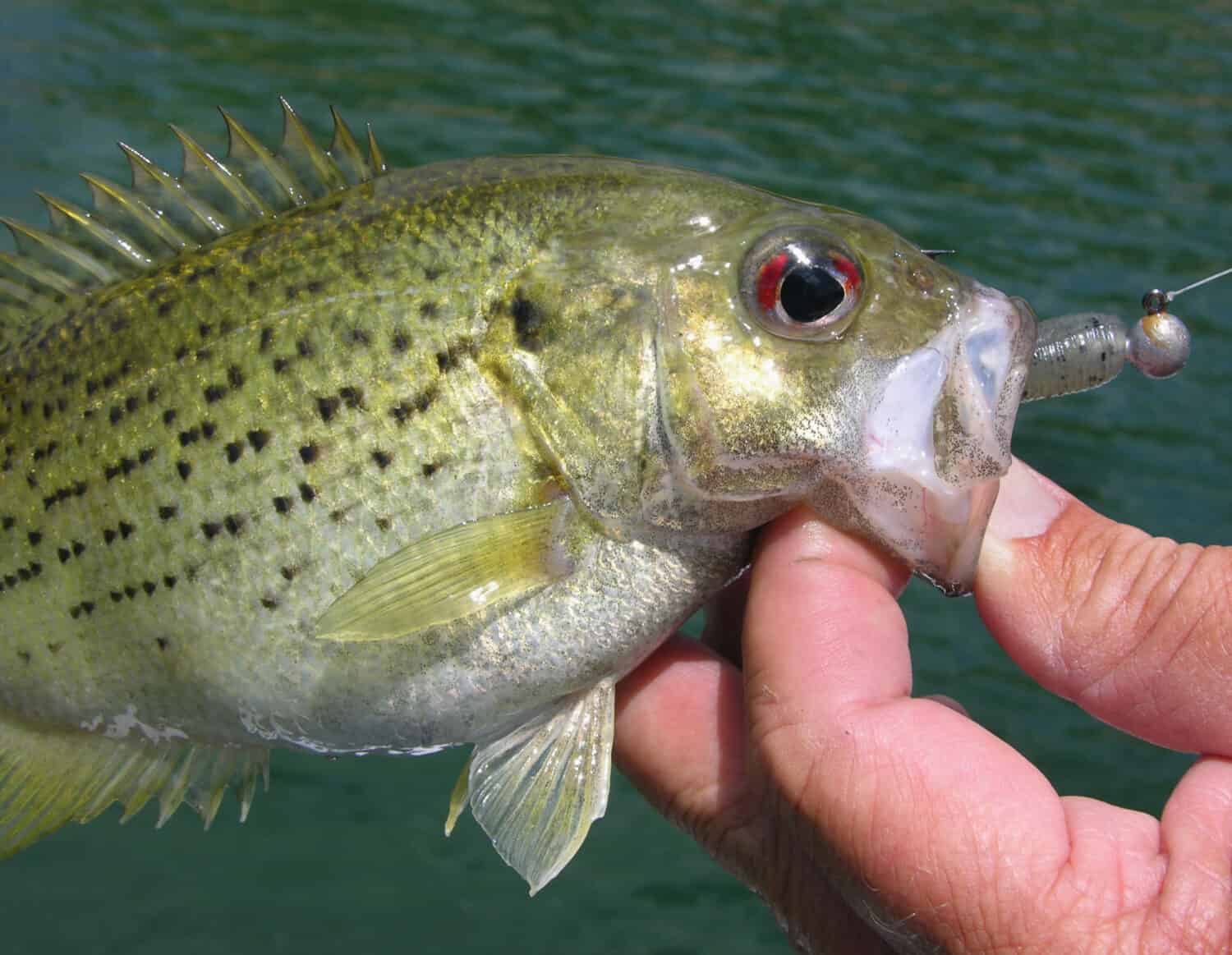
Unlike smallmouth and largemouth bass, the best time to catch rock bass is between June and September.
©Steve Brigman/Shutterstock.com
Closing Thoughts On The Most Polluted Lake In Washington
Pollution of water bodies, such as rivers and lakes, endangers the environment and biodiversity worldwide, with severe and far-reaching consequences. In Washington State, Lake Washington faced severe pollution due to sewage contamination, causing excessive nutrients and algae growth, which altered water quality. Luckily, Metro took the initiative in 1958 to redirect sewage and repair the ecosystem, leading to a remarkable recovery.
The phosphorus levels plummeted from 70 to 16 parts per billion, enhancing water quality. The algae, zooplankton, and fish populations changed by removing sewage, causing the cyanobacteria, Oscillatoria rubescens, to vanish. Lake Washington is a shining example of a restored environment with improved water quality, transparency, and ecosystem health.
The photo featured at the top of this post is © iStock.com/smodj
Thank you for reading! Have some feedback for us? Contact the AZ Animals editorial team.






